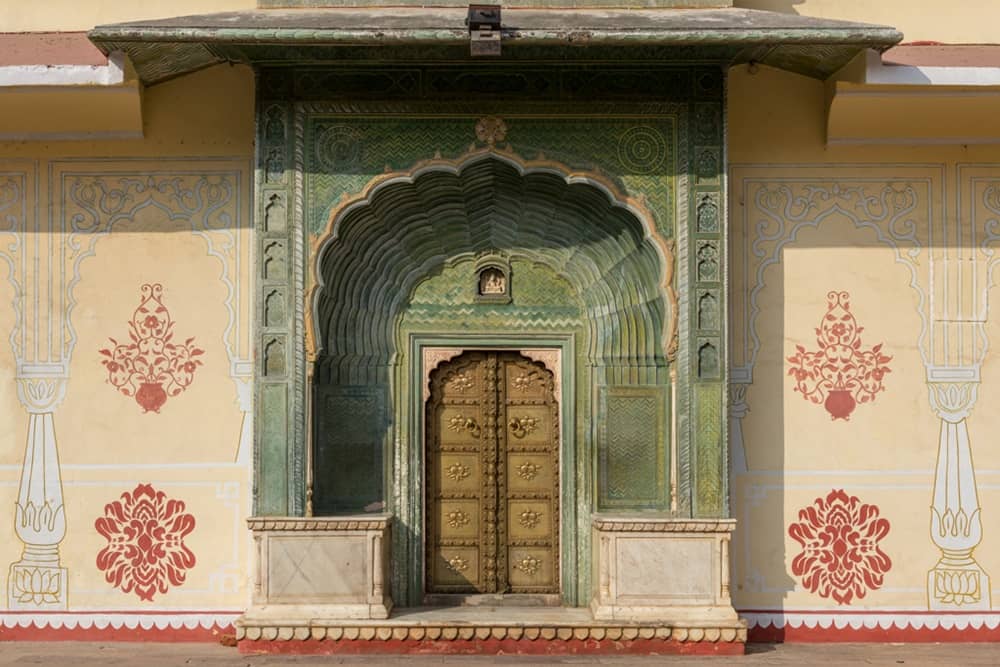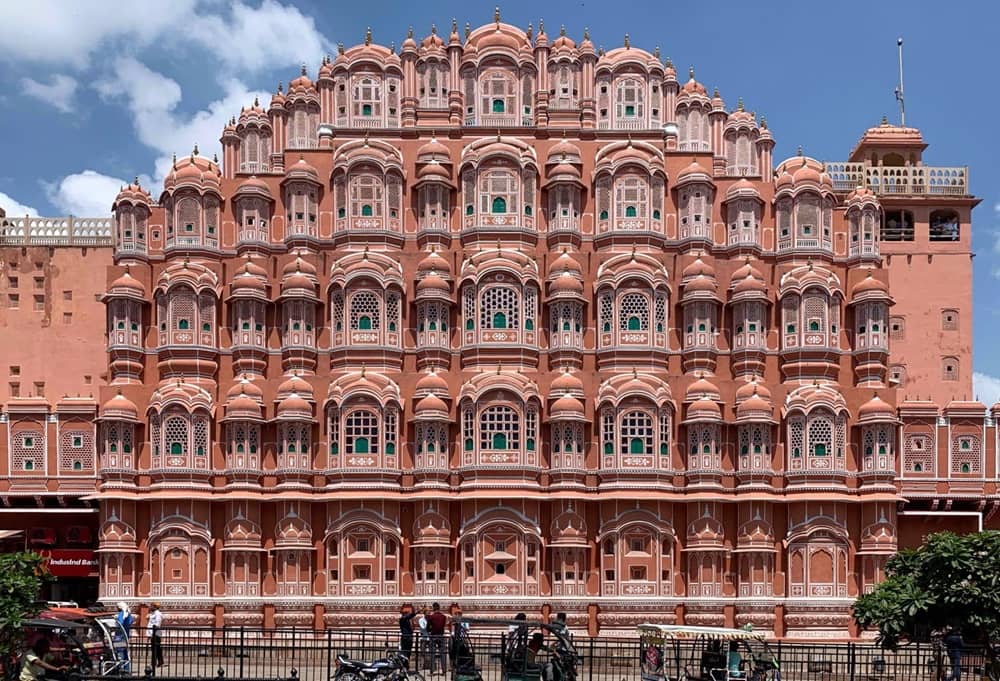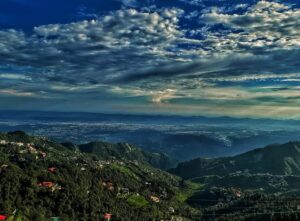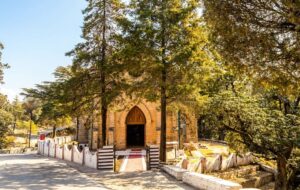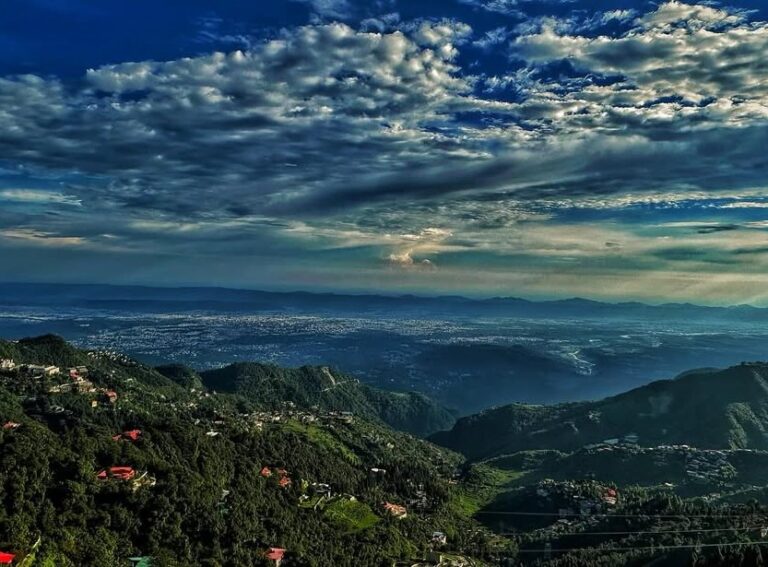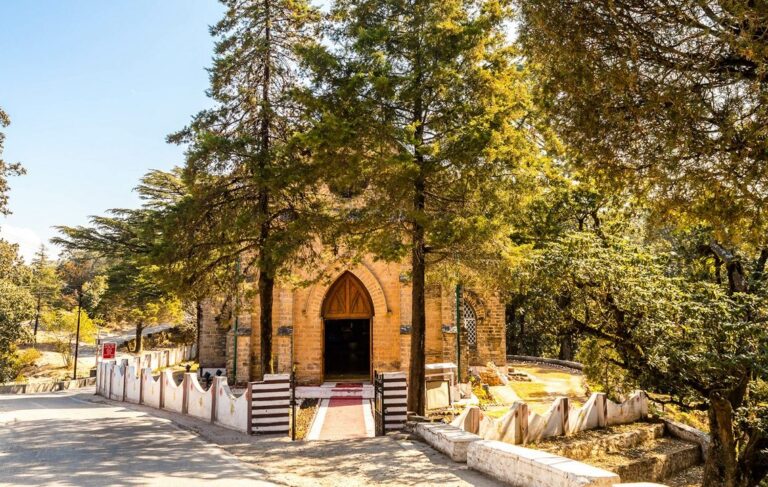Discover Jantar Mantar in Rajasthan, Jaipur, India
The Jantar Mantar in Rajasthan, Jaipur, a UNESCO World Heritage Site, is an open-air astronomical observatory that has captivated the imagination of travelers and scientists alike. This rare and fascinating structure, built in the early 18th century, continues to be a symbol of India’s rich scientific and cultural heritage.
History of Jantar Mantar in Rajasthan
The Jantar Mantar was constructed by Maharaja Sawai Jai Singh II in 1734, who was deeply fascinated by astronomy and celestial bodies. The observatory features 19 massive instruments, each designed for specific astronomical purposes. The most prominent among them is the Samrat Yantra, the largest sundial in India.
This extraordinary observatory was built to study the movements of celestial objects using Ptolemaic positional astronomy, which had been adopted by several ancient civilizations. What makes the Jantar Mantar unique is that it allowed observers to track stars and planets with the naked eye, showcasing the brilliance of ancient Indian science.
Suggested Read: Pink City of India: Why is Jaipur Called Pink City in India?
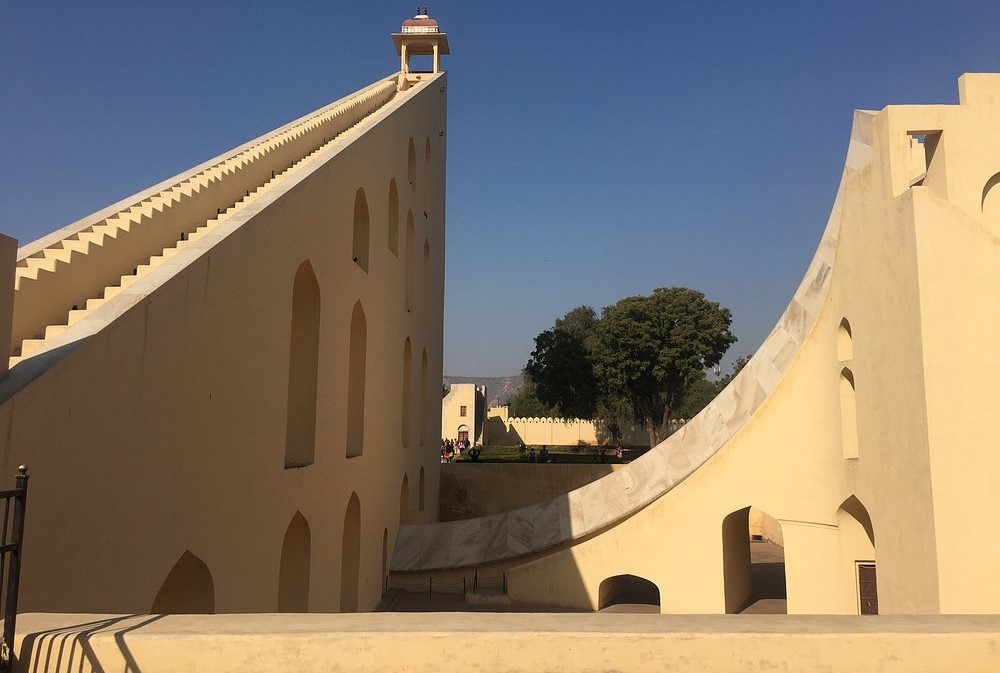
Architectural Marvel of Jantar Mantar
The architecture of Jantar Mantar is a testament to the ingenuity of the craftsmen and scientists of the time. The structure covers a vast area of 18,000 sq. meters and is made from locally sourced marble and stone.
Each instrument at the observatory, also known as a Yantra, was meticulously planned and constructed with precision. The monument is composed of bronze tablets, mortar, and other durable materials, ensuring its preservation through the centuries.
The Jantar Mantar has not only stood the test of time but has also played a crucial role in the field of astronomy. Since 1961, the observatory has been under the care of the Archaeological Sites and Monuments, Rajasthan, and continues to draw the attention of visitors and scientists worldwide.
Significance of Jantar Mantar and its Instruments
The name Jantar Mantar comes from two Sanskrit words: “Jantra,” meaning instrument, and “Mantra,” meaning calculate. Together, they translate to “calculating instruments.” These instruments were used for a wide range of astronomical and celestial purposes, such as:
- Predicting eclipses
- Tracking the movement of stars and planets
- Determining celestial altitudes
- Measuring time accurately
- Observing constellations and planetary declinations
Suggested Read: Amber Fort and Palace Jaipur India: Elephant ride timings, tickets
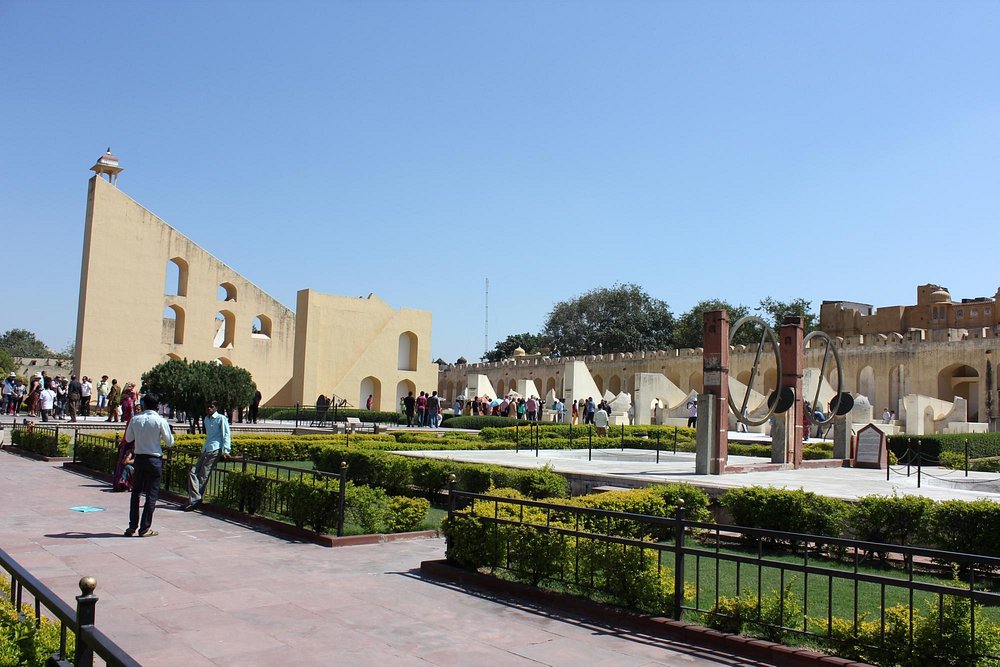
Instruments of Jantar Mantar in Rajasthan
1. Samrat Yantra
The Samrat Yantra is the largest sundial in India, towering over the complex. It is used to measure the time of day with remarkable precision. The sundial is inclined at 27 degrees, corresponding to Jaipur’s latitude, and can accurately measure time down to two seconds.
2. Dakshin Bhitti Yantra
This Yantra is designed for measuring the altitude and meridian of celestial objects. It also helps in calculating the distances between celestial bodies, providing valuable data for early astronomers.
3. Digamsha Yantra
The Digamsha Yantra is an important instrument used for determining the time of sunrise and sunset. By observing the horizon, astronomers could predict the exact times of these daily events.
4. Disha Yantra
This instrument is used to showcase the directions (north, south, east, west) and helps in measuring celestial angles with respect to the Earth’s horizon, offering critical insights for navigation and astronomical studies.
5. Dhruva Darshak Pattika
The Dhruva Darshak Pattika was specifically designed to locate and observe the Pole Star (Dhruva Tara) in relation to other celestial bodies. This Yantra was crucial for determining the Earth’s rotation and orientation in ancient times.
6. Jai Prakash Yantra
The Jai Prakash Yantra provides an inverted image of the sky, allowing astronomers to observe celestial objects and measure their altitudes. The observer can even move inside the instrument, making it possible to calculate hour angles.
7. Kapila Yantra
This instrument is used to measure the coordinates of celestial bodies in the sky, helping in detailed astronomical studies of star positions and movement.
8. Kanali Yantra
Though lesser-known, the Kanali Yantra played a role in tracking the movement of celestial bodies and calculating their positions relative to the Earth.
9. Kranti Vritta Yantra
The Kranti Vritta Yantra is designed to measure the latitude and longitude of celestial bodies, aiding in the determination of their exact positions at any given time.
10. Laghu Samrat Yantra
A smaller version of the Samrat Yantra, the Laghu Samrat Yantra is also a sundial, but it is inclined at 27 degrees like the larger counterpart. It offers a simpler way to measure time during the day.
11. Misra Yantra
The Misra Yantra is a compilation of five different instruments, each with its own function. This Yantra was designed to predict the shortest and longest days of the year and help in observing the time differences between Jaipur and other key locations such as Zurich, Greenwich, and Noke.
12. Nadi Valaya Yantra
The Nadi Valaya Yantra is an instrument designed to measure time with remarkable precision, accurate to less than a minute. It consists of two distinct instruments: one facing the northern hemisphere and the other facing the southern hemisphere, allowing measurements in both directions.
13. Palbha Yantra
Though lesser-known, the Palbha Yantra contributes to the overall accuracy of celestial calculations. This instrument was used in ancient times to assist with various astronomical measurements.
14. Rama Yantra
The Rama Yantra is primarily used for measuring the altitude of the Sun. It is an innovative structure that allows the observer to determine the height of the Sun in the sky, contributing to timekeeping and seasonal predictions.
15. Rashi Valaya Yantra
The Rashi Valaya Yantra is one of the most captivating instruments, used for tracking and locating all 12 zodiac constellations. It helps depict the movements of stars within the different zodiac formations, making it essential for astrological studies.
16. Shastansh Yantra
The Shastansh Yantra is a unique instrument featuring a 60-degree arc, built within the meridian plane. Housed in a slightly darkened chamber, this Yantra uses light to calculate the Sun’s diameter, declination, and distance. Every day at noon, sunlight passes through a pinhole and illuminates the chamber, providing essential astronomical data.
17. Unnatamsa Yantra
The Unnatamsa Yantra is designed for measuring the altitude of celestial bodies. This Yantra was used by ancient astronomers to track the position of stars and planets relative to the Earth.
18. Vrihat Samrat Yantra
The Vrihat Samrat Yantra holds the title of the world’s largest sundial, standing at an impressive 27 meters tall. This majestic structure can measure time with an incredible accuracy of every 2 seconds. It is one of the most iconic instruments at Jantar Mantar, attracting visitors and scientists from around the globe.
19. Yantra Raj Yantra
The Yantra Raj Yantra is a massive astrolabe and is considered one of the largest of its kind in the world. Its primary function is to calculate the Hindu calendar based on astronomical observations. This instrument played a vital role in the religious and cultural calendar of ancient India.
2o Chakra Yanntra
The Chakra Yantra, is used to denote four specific times of the day. It also correlates with the time at other famous observatories, such as Greenwich in the UK, Zurich in Switzerland, Saitchen in the Pacific, and Noke in Japan.
Legacy of Jantar Mantar and the Maharaja’s Vision
The collection of Yantras at Jantar Mantar showcases the brilliance of ancient Indian astronomy, which operated without the aid of modern technology. These instruments allowed astronomers to make incredibly accurate calculations related to time, space, and celestial bodies.
The brainchild behind this impressive observatory was Maharaja Sawai Jai Singh II, whose passion for astronomy led him to commission the creation of five Jantar Mantars across India—in Jaipur, New Delhi, Ujjain, Mathura, and Varanasi.
#Trivia: The term “Jantar Mantar” originates from Sanskrit words: “Jantra” meaning instrument, and “Mantra” meaning calculation. Together, it translates to “an instrument of calculation.”


